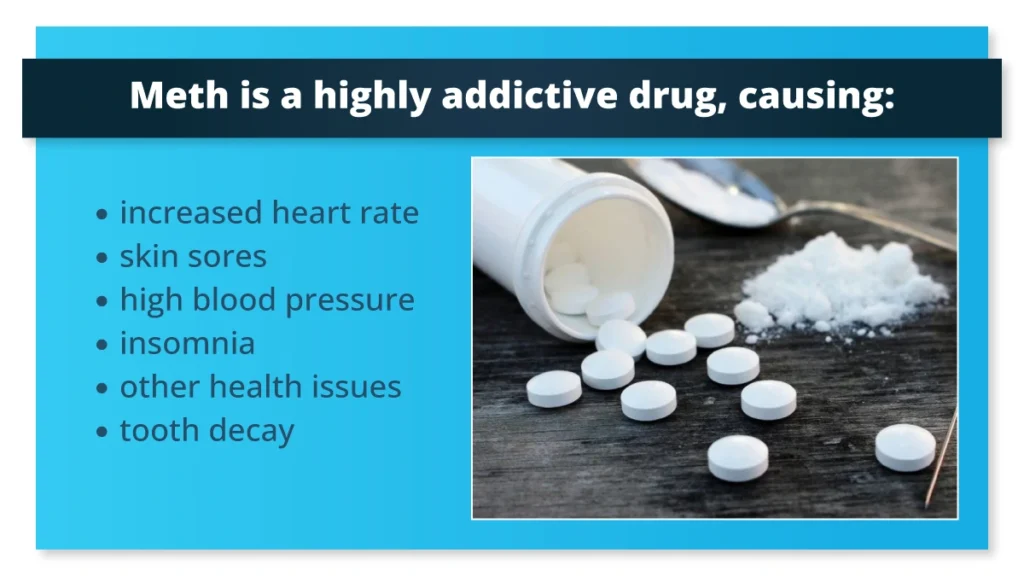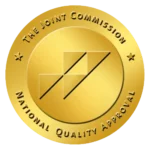Power of Meth: Understanding Its Addictive Nature
Methamphetamine, commonly known as meth, is a highly addictive stimulant that significantly impacts the brain and body. Its addictive potential is notably high, often leading to rapid dependence and compulsive drug-taking behavior. This article will give insights into what makes meth so addictive, exploring its profound effects on the brain and body that drive the cycle of drug abuse and addiction. In addition, it will discuss available treatment programs for individuals grappling with meth addiction.

Key Takeaways
Meth is highly addictive, and understanding its addictive potential is important for addressing the issue. Here is what you need to know about this drug:
- Meth has a complex history, originating in Japan and gaining notoriety in the United States in the 1960s.
- The use of methamphetamine alters the levels of dopamine in the brain, causing an intense craving and dependency on the drug.
- Meth’s addictiveness stems from tolerance, dependence, and the cycle of withdrawal and relapse.
- Most effective treatments include detox, therapy, counseling, and medication-assisted treatment.
The Haven Detox-Little Rock offers hope and comprehensive services to help you overcome meth addiction. Contact us at (501) 271-3342 for detailed information.
Meth Use Over Time: A Brief History
Methamphetamine, or crystal meth, has a history marked by its various uses, both legal and illicit. First synthesized in Japan in 1919, meth was initially developed for medical purposes, such as nasal decongestants and boosting alertness. During World War II, it was used to keep soldiers awake and alert.
In the mid-20th century, meth gained popularity in treatment for various conditions, including weight loss and attention-deficit hyperactivity disorder (ADHD). However, as its addictive potential became evident, its legal status shifted, and it was classified as a Schedule II controlled substance.
Meth’s illicit use surged in the 1960s and 1970s, leading to government crackdowns on its production. The ’90s saw a resurgence of meth, particularly in rural America, as it became easier to manufacture.
Today, meth continues to be a significant problem in the United States, contributing to addiction and various social issues. Its history reflects the complex relationship between legitimate medical use, recreational abuse, and the efforts to control its production and distribution.
The Science Behind Meth Addiction
Meth is a potent stimulant that profoundly affects the brain, leading to a higher risk of addiction. Understanding the science behind meth addiction can shed light on its grip on individuals. Here, we’ll explore how meth affects the brain and the role of dopamine in driving meth dependence.
How Meth Affects the Brain
Meth enters the bloodstream and rapidly crosses the blood-brain barrier. Once in the brain, it causes a surge of dopamine release, leading to intense feelings of pleasure, alertness, and increased energy.
Over time, long-term meth use results in severe damage to the brain’s dopamine-producing neurons, making it harder for the brain to experience pleasure and reward naturally. This leads to a vicious cycle where individuals crave more meth to feel good, ultimately reinforcing addiction.
Role of Dopamine in Meth Addiction
Dopamine plays a pivotal role in meth addiction. The drug hijacks the brain’s reward system, making it difficult for meth users to resist its powerful allure. As a person continues to use meth for a long period, they require higher doses to achieve the same pleasurable effects.
This is because the brain adapts to the excessive dopamine release, reducing its sensitivity and leading to tolerance. The cravings for meth intensify, and individuals often find themselves caught in a cycle of addiction as their brains have become rewired to prioritize the pursuit of meth-induced euphoria.
Why It’s Hard To Break Free
Meth’s addictive nature lies in the complex web of tolerance, dependence, withdrawal, and relapse that traps those who use it, making it one of the most challenging substances to quit.
Trap of Tolerance and Dependence
One of the primary reasons meth is so addictive is due to the trap of tolerance and dependence it sets. Initially, individuals experience an intense rush of euphoria, but with continued chronic meth use, the body becomes tolerant to the drug’s effects. This means individuals need larger doses over time to achieve the same high.
As tolerance builds, individuals may find themselves taking the drug more frequently or in higher amounts, leading to a rapid spiral into dependence. The increasing tolerance reinforces the addictive cycle, making it harder for individuals to feel pleasure without the drug, thus perpetuating the addiction.
Cycle of Withdrawal and Relapse
Methamphetamine addiction creates a challenging cycle of withdrawal and relapse. When someone addicted to meth attempts to stop using the drug, they experience powerful withdrawal symptoms such as fatigue, depression, intense cravings, and in some cases, paranoia.
These symptoms contribute to the difficulty of quitting, often leading individuals to relapse to alleviate the distressing withdrawal effects. This cycle of attempting to quit, experiencing withdrawal, and then relapsing perpetuates the addiction, making breaking free from meth’s grip an arduous challenge.
Healing From the Grip of Meth: Treatment Options
Several evidence-based approaches are available to help individuals break free from the tight grip of meth abuse, offering them a path toward recovery and a healthier life.
Detox and Withdrawal Management
The first step in meth addiction treatment typically involves detoxification, during which the body rids itself of meth and its byproducts. This phase can be challenging as individuals often experience severe symptoms of withdrawal, such as anxiety, depression, and fatigue.
Medical supervision and support are crucial during detox to ensure safety and manage these symptoms effectively. The process can take several days to weeks, depending on the individual’s methamphetamine use history.
Therapy and Counseling
Therapy and counseling are integral components of meth addiction treatment. Behavioral therapies like cognitive-behavioral therapy (CBT) and contingency management (CM) help individuals recognize and change addictive behaviors, develop coping strategies, and improve problem-solving skills.
Counseling offers a safe space for those in recovery to address root issues that may have contributed to their substance use disorder (SUD). Support from therapists, counselors, and support groups can be a powerful source of motivation and healing.
Medication-Assisted Treatment (MAT)
In some cases, medication-assisted treatment (MAT) can be a valuable addition to the recovery process. While there are no FDA-approved medications specifically for treating meth addiction, medications may be prescribed to manage co-occurring mental health conditions or to address specific symptoms. Additionally, research is ongoing to develop medications specifically for meth addiction.
Effective treatment for methamphetamine use disorder often involves a combination of these approaches tailored to meet the individual’s needs. With a comprehensive treatment plan and ongoing support, recovery from meth addiction is possible.
Frequently Asked Questions (FAQ)
How often do you need to use meth to get addicted?
Meth addiction can develop rapidly, often after using it only a few times. The exact frequency or quantity varies between individuals, but meth’s highly addictive nature means it can lead to dependency and cravings after a short period of use.
Why is meth addiction so hard to kick?
Meth addiction is tough to beat because it alters the brain’s chemistry, causing intense cravings and emotional turmoil. Withdrawal symptoms can be severe, making it hard to quit. The substance abuse cycle often leads to relapse, making recovery a complex and demanding process.
How big of a problem is meth addiction?
Meth addiction is a significant problem in the United States. It affects individuals, families, and communities, contributing to crime, serious health problems, and social challenges. The widespread impact underscores the urgent need for prevention and treatment efforts.
What is it like to be addicted to meth?
Being addicted to meth is like riding a rollercoaster of extreme highs and lows. It’s a constant battle with cravings, sleeplessness, paranoia, and deteriorating health. Life revolves around the drug, damaging relationships, and self-esteem. It’s a challenging, dark journey with moments of hopelessness.
A New Beginning Awaits at The Haven Detox-Little Rock
Dealing with crystal meth addiction can feel like an overwhelming battle. The Haven Detox-Little Rock is here to provide the support and care you need on your journey to a healthier, addiction-free future.
Our medical professionals offer a range of services designed to help you overcome addiction. Our process begins with medical detox, where we help your body safely eliminate harmful toxins. Our residential rehab program provides intensive 24/7 care tailored to your unique needs. We also offer IV therapy to replenish the nutrients depleted by addiction. Your path to recovery starts with a simple step. Contact us at (501) 271-3342 today for more information.




